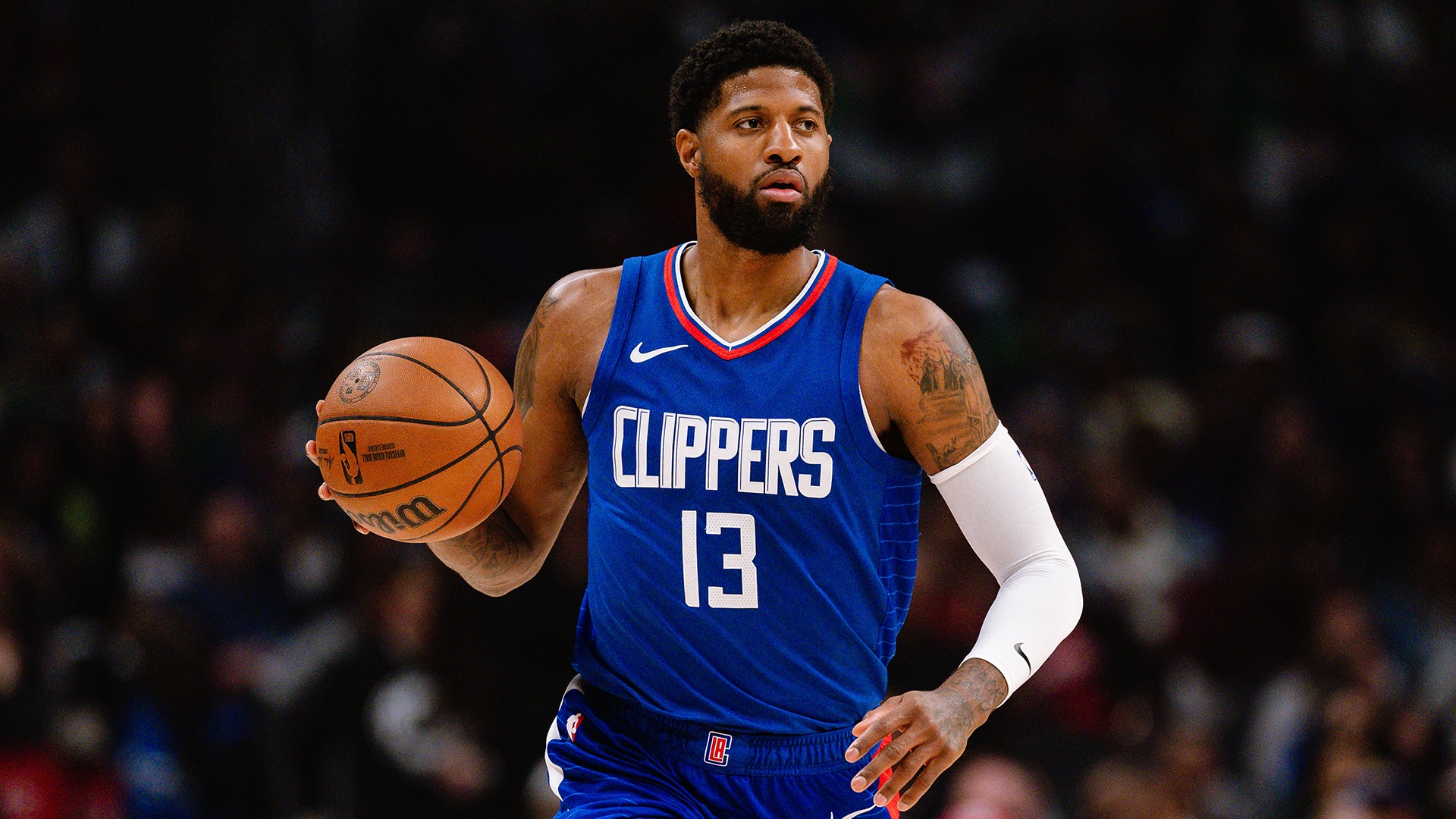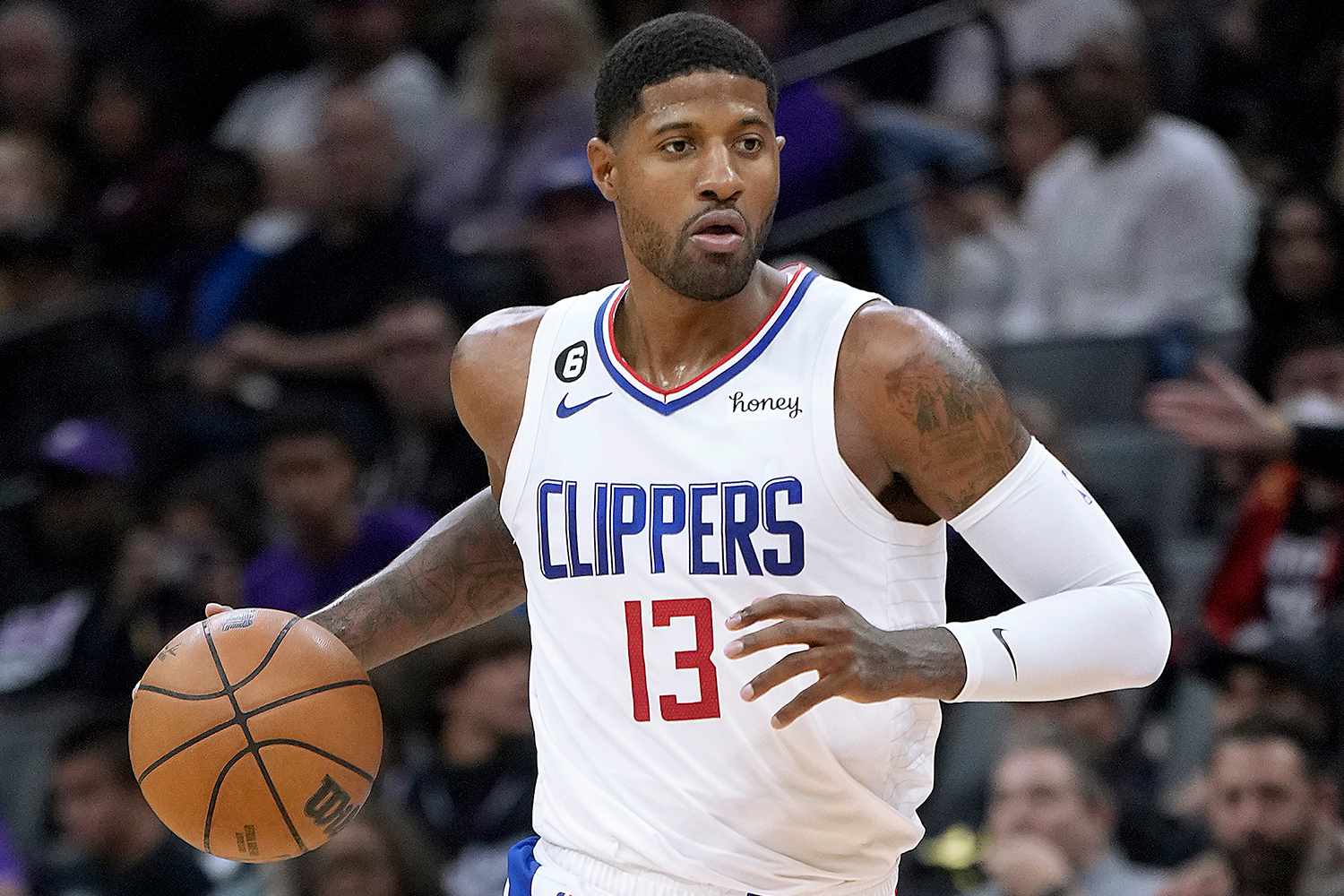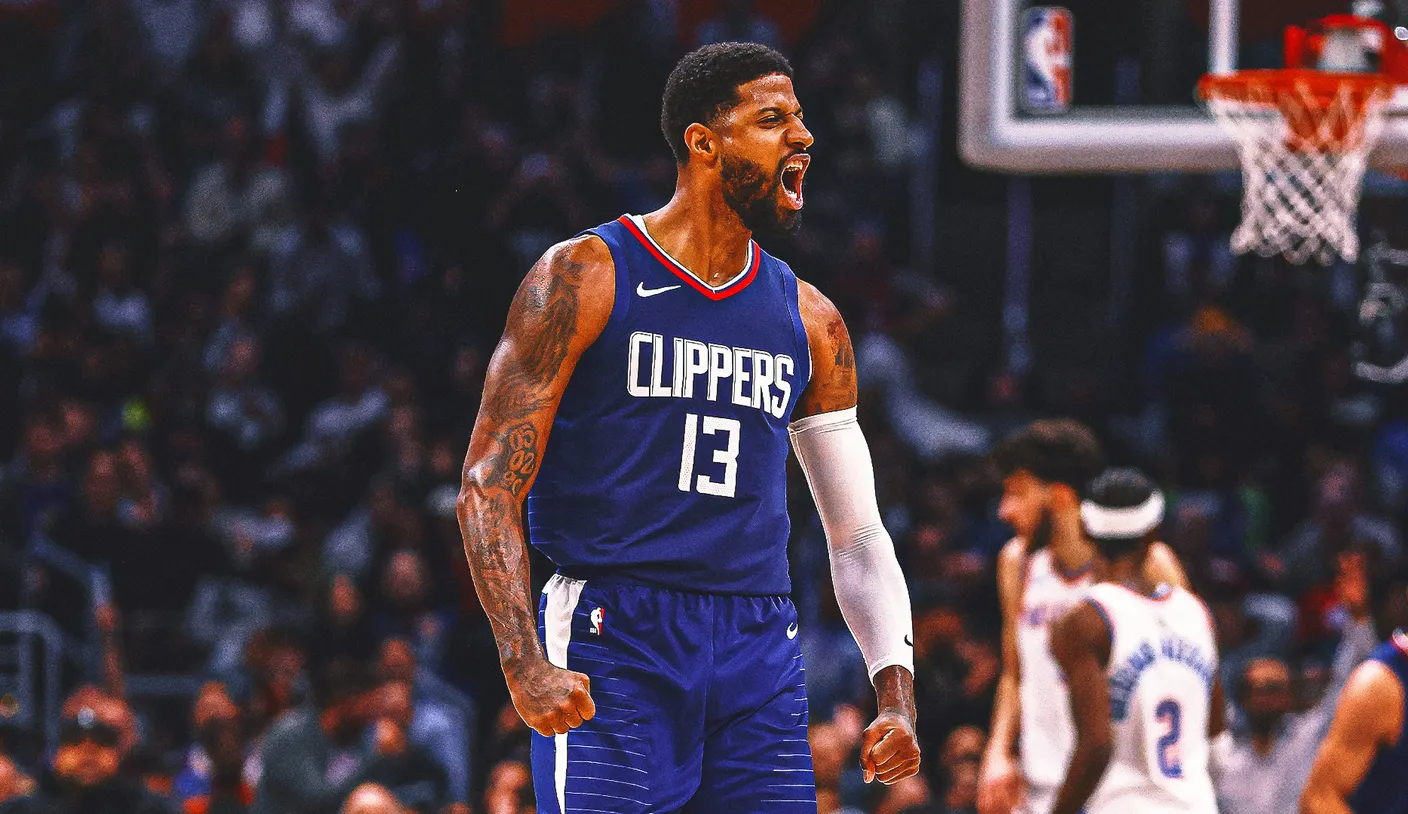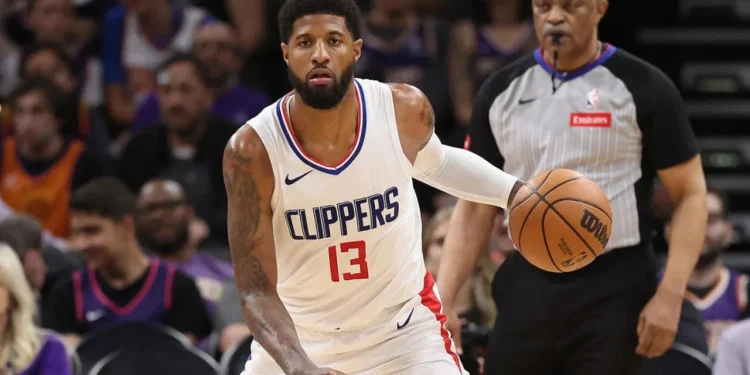The Los Angeles Clippers are currently playing a high-stakes game with one of their star players, Paul George. With George’s player option on the line and the looming possibility of free agency, the Clippers’ approach to these negotiations could either secure their future or lead to a significant loss.
Los Angeles Clippers’ Slow-Paced Negotiations: A Strategy or a Risk?

Paul George, a pivotal player for the Los Angeles Clippers, is expected to decline his player option and enter free agency. Despite their interest in retaining George, the Clippers have yet to come to an agreement, which is raising eyebrows across the NBA.
According to Marc Stein, the Clippers are deliberately letting negotiations drag out, signaling their intent to control the financial terms of George’s potential new contract. Stein notes, “The Clippers certainly hope to retain George in free agency, but they’ve made it clear by letting negotiations drag out to this point that they want to do it at their price.” This strategic delay could be a way for the Clippers to manage George’s earnings, especially considering his history of injuries.
The Free Agency Landscape: Competition for Paul George
As the free agency period approaches, other teams are also expressing interest in George. The Philadelphia 76ers and Orlando Magic are reportedly eyeing the veteran forward, adding pressure on the Clippers to finalize a deal.
George’s performance this season has been impressive. He played in 74 regular-season games, averaging 22.6 points, 5.2 rebounds, and 3.5 assists per game, while shooting 47.1% from the field and 41.3% from three-point range. Despite approaching his mid-30s, George remains an elite forward in the NBA, making him a valuable asset for any team.
Balancing Talent and Health: The Los Angeles Clippers’ Dilemma

While George’s talent is undeniable, his injury history is a significant concern for the Clippers. This season marks the first time since joining the Clippers in 2019 that George has played more than 56 games. This inconsistency in his availability might be influencing the Clippers’ cautious approach to his contract extension.
Steve Ballmer, the Clippers’ owner and the wealthiest owner in the NBA, has the financial resources to pay for top talent. However, he also needs to consider the luxury tax implications and the long-term sustainability of investing in players with a history of injuries. George will likely need to accept a pay cut in his next contract if he wants to remain with the Clippers. If he demands too high a salary, the Clippers might decide to let him walk away, which could significantly impact their performance next season.
The Potential Fallout: Losing Paul George
If the Clippers continue to delay negotiations and fail to offer a competitive contract, they risk losing George to a rival team. This could weaken their roster and diminish their chances of contending in the highly competitive Western Conference. The Clippers’ hardball tactics could ultimately backfire, leaving them without one of their star players and potentially jeopardizing their future success.
In conclusion, the Clippers’ approach to Paul George’s contract negotiations is a risky gamble. While they aim to manage his earnings and account for his injury history, they must also consider the competitive landscape and the potential loss of a key player. The outcome of these negotiations will be crucial for the Clippers’ prospects in the upcoming season.
The Paul George Saga: Los Angeles Clippers’ Strategic Gamble
The Los Angeles Clippers’ negotiation strategy with Paul George has raised questions about their long-term vision. As George approaches free agency, the Clippers are playing a delicate game of financial management and talent retention. This strategy could either solidify their future or lead to a significant setback.
The Importance of Paul George to the Los Angeles Clippers
Paul George’s contributions to the Clippers cannot be overstated. This season, he demonstrated his value by playing 74 regular-season games and delivering impressive stats. With an average of 22.6 points, 5.2 rebounds, and 3.5 assists per game, George remains a top-tier forward in the NBA. His shooting accuracy, with 47.1% from the field and 41.3% from beyond the arc, underscores his offensive prowess.
However, George’s tenure with the Clippers has been marred by injuries, making his availability a critical factor in the team’s decision-making process. The Clippers’ cautious approach to his contract extension reflects their need to balance his exceptional talent with the risks associated with his injury history.
The Competitive Pressure: Other Teams in the Mix

The Clippers are not the only team vying for George’s services. The Philadelphia 76ers and Orlando Magic have expressed interest, adding a competitive edge to the negotiations. The Clippers’ delay in finalizing a deal could give these teams an opportunity to swoop in and secure George’s signature.
Marc Stein’s report highlights the Clippers’ strategic delay, noting their intention to manage George’s earning potential. “The Clippers certainly hope to retain George in free agency, but they’ve made it clear by letting negotiations drag out to this point that they want to do it at their price,” Stein explained. This approach, while fiscally prudent, could backfire if the Clippers fail to secure George and lose him to a rival team.
Financial Considerations: The Cost of Retaining Star Talent
Steve Ballmer’s financial capacity allows the Clippers to construct a competitive team, but the luxury tax implications of high-value contracts cannot be ignored. George’s injury history complicates the decision-making process, as investing heavily in a player with inconsistent availability poses a significant risk.
If George demands a high salary, the Clippers might opt to let him leave, prioritizing financial flexibility over retaining a potentially injury-prone star. This decision would have far-reaching consequences for the team’s competitive standing and fan base.
The Path Forward: Strategic Decisions and Potential Outcomes
The Clippers’ management faces a critical juncture. They must weigh the benefits of retaining an elite player like George against the financial and injury risks. A well-structured contract that balances these factors could ensure George’s continued contribution to the team while mitigating potential downsides.
The outcome of these negotiations will be pivotal for the Clippers. Securing George at a reasonable cost would reinforce their competitive edge in the Western Conference. Conversely, losing him could trigger a period of rebuilding and adjustment.
In the high-stakes world of NBA negotiations, the Clippers’ approach to Paul George’s contract extension is a strategic gamble. The coming weeks will reveal whether their cautious tactics will secure their future or result in the loss of a key player, with significant implications for their performance and prospects in the upcoming season.
Source: Yardbarker









